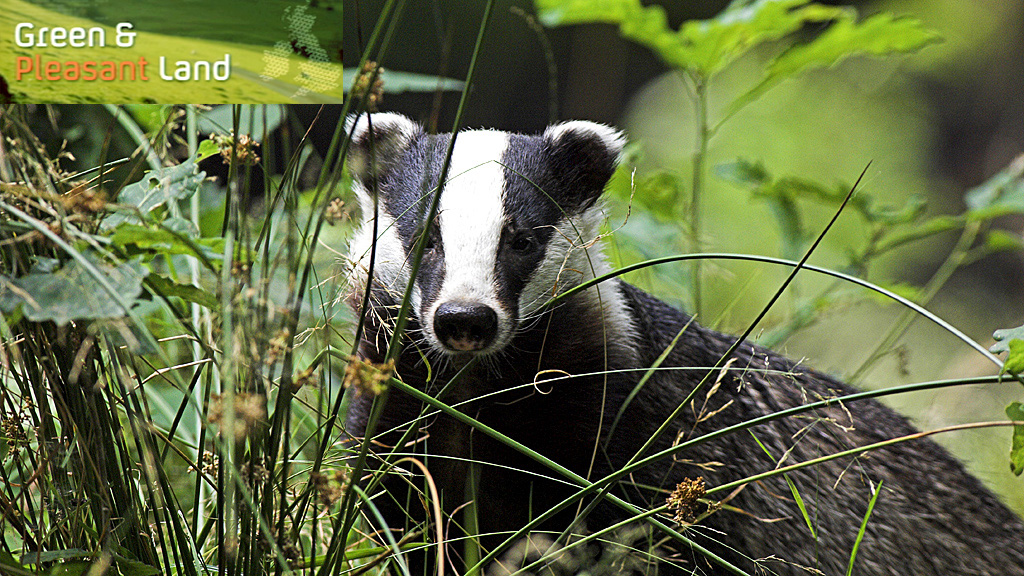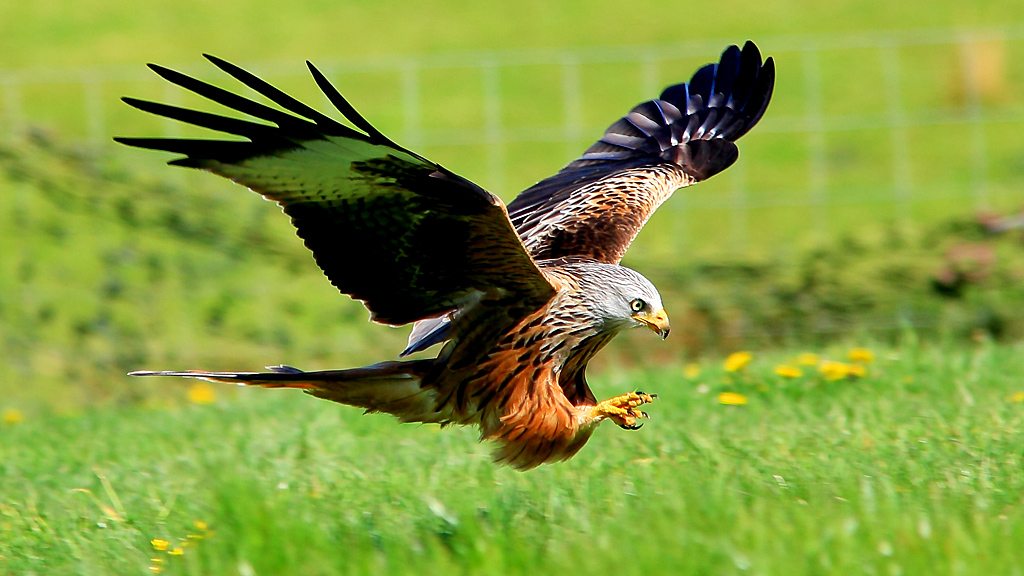Wildlife winners: what’s breeding like rabbits?
Britain’s changing climate is prompting the free fall decline of some wildlife, scientists warn. But while some species struggle, Channel 4 News tracks down the winners in our green and pleasant land.

A report by 40 of Britain’s top scientists claims that the extreme weather, climate change and urbanisation of modern Britain has created one of the worst environments for wildlife in our history.
Since the 1960s for example, Britain has lost 44 million birds – with the bird population falling from 210 million to 166 million in the last 50 years, according to the RSPB.
Google Hangout debate: How do we stop nature's decline?
But in the survival of the fittest, some things are flourishing.
Bird in the hand
The good news is that we have more species of birds breeding in the UK than ever before. Their number may have reduced, but there is far greater diversity, the RSBP told Channel 4 News.
Of the 246 species native to our country, one fifth has lost half their population. Yet others have thrived.
Since 1970, the population of greater spotted woodpeckers has risen by 368 per cent. The number of collared doves is up by 333 per cent to 990,000 today and the red kite (pictured below) population, which was nearing extinction in 1970, has climbed by 572 per cent.
With some species on the up, should we just let natural selection run its course? The RSBP said we have a responsibility to keep our diverse birdlife alive. The thriving, or indeed resurrection of some species in the UK is not all thanks to survival of the fittest. It is a combination of climate change and herculean conservation efforts.
It was the introduction of new laws in the European Union in the 1980s that put in place “very, very strong protection laws, among the best in the world”, the RSPB said.

Lesser loved mammals
While there is extensive data available on the state of Britain’s birdlife, our mammals are lesser loved. Few people think to report sightings of mice, rats or foxes.
The Mammal Society is currently working on the first empirical national study of mammals in 25 years.
Anecdotally however, it told Channel 4 News that the number of otters has doubled in the last 25 years to an estimated population of 12,000 today. Their revival is put down to huge conservation efforts, and the legal move to protect them from being hunted in 1981.
The new laws also saw the revival of the polecat. Hunted almost to eradication; there are now an estimated 46,000 polecats in Britain.
The Mammal Society said we have the only thriving population of badgers in Europe – most other countries still allow the hunting of badgers. “In Germany they have make up brushes made of badger hair,” Laura Drake from the society said.
Britain’s growing families of badgers, however, are due to face a cull this summer in Somerset and Gloucestershire. The cull, which will be piloted in the two areas, will see badgers being shot in open – rather than being trapped first in cages – in order to halt the spread of tuberculosis to cattle.
The increase of foxes in urban areas is widely reported on an anecdotal level, yet no official study has been completed.
According to the Game and Wildlife Conservation Trust, the best estimate of the current British fox population is 240,000 adults in spring, to which 425,000 cubs are added every year. Gamekeepers probably kill up to 80,000 a year, the GWCT said, adding that in urban areas – where an estimated 14 per cent of foxes live – road traffic is the primary cause of death.
The Mammal Society is calling on the public to report sightings of all mammals. Ms Drake said: “There’s no coordinated effort to find out how many rats there are, for example. We’re asking the public to report sightings of every mammal – even mice.”
As for our rabbits, they really do breed like rabbits. In the 1950s, the myxomatosis virus had a 99 per cent mortality rate among our rabbit population. But today, genetic resistance is on the up with mortality rates down to a third among rabbits with the virus.
According to the Mammal Society their ability to breed is not a concern, with outbreaks of myxomatosis considered to be a natural way of culling the large numbers. While there is no national study of the rabbit population, in the 1990s it was estimated that Britain was home to some 40 million rabbits.
Some species of bats are reportedly growing in number thanks to conservation efforts and climate change. Latest estimates reported that 11 of the 18 bat species in the UK are stable or increasing. Prior to the 1981 legal changes, bat roosts were regularly smoked out of houses, destroyed by building, development and climate change.

A bug’s life
As for butterflies, there are “hardly any success stories”, the Butterfly Conservation told Channel 4 News.
Glimmers of hope rest in the revival of the previously extinct large blue, which was reintroduced in 1983, and the Jersey tiger moth among a few others. The latter once only existed on the south coast, but today has spread across the south.
Climate change and, until recently, the milder winters has helped some species to expand. The number of large pale orange silver-washed fritillary has shot up in the last 10-15 years, though exact numbers are unknown.
While the speckled wood species, commonly found in woodland areas, has travelled north and “conquered Scotland”, the National Trust told Channel 4 News.
The National Trust said that 75 per cent of the butterfly population has disappeared due to our volatile weather – butterflies desperately need a good summer.
The damp conditions have been good for some – note last year’s influx of slugs.
While rising numbers of slugs might not prove popular with the public, the National Trust is cheered by the “remarkable” rise of the dragonfly.
In the last 20 years it is thought that six new species have colonised the UK – in response to the climate change. Hailing from the south east, dragonflies are spreading up across the country. A spokesman for the National Trust said: “They are very beautiful and exciting – they are at the top end of the food chain…the only thing that eats them is the rare hobby falcon.”
Perhaps it is their presence that helped the hobby’s population rise 16 percent between 1995 and 2010, according to RSPB data.
-
Latest news
-
Laughing Boy: New play tells the tragic tale of Connor Sparrowhawk5m

-
Sewage warning system allows some of worst test results to be left off rating system, analysis shows3m

-
Post Office inquiry: Former CEO didn’t like word “bugs” to refer to faulty IT system4m

-
Israeli soldier speaks out on war in Gaza12m

-
PM’s defence spending boost should be ‘celebrated’, says former Armed Forces Minister4m

-




